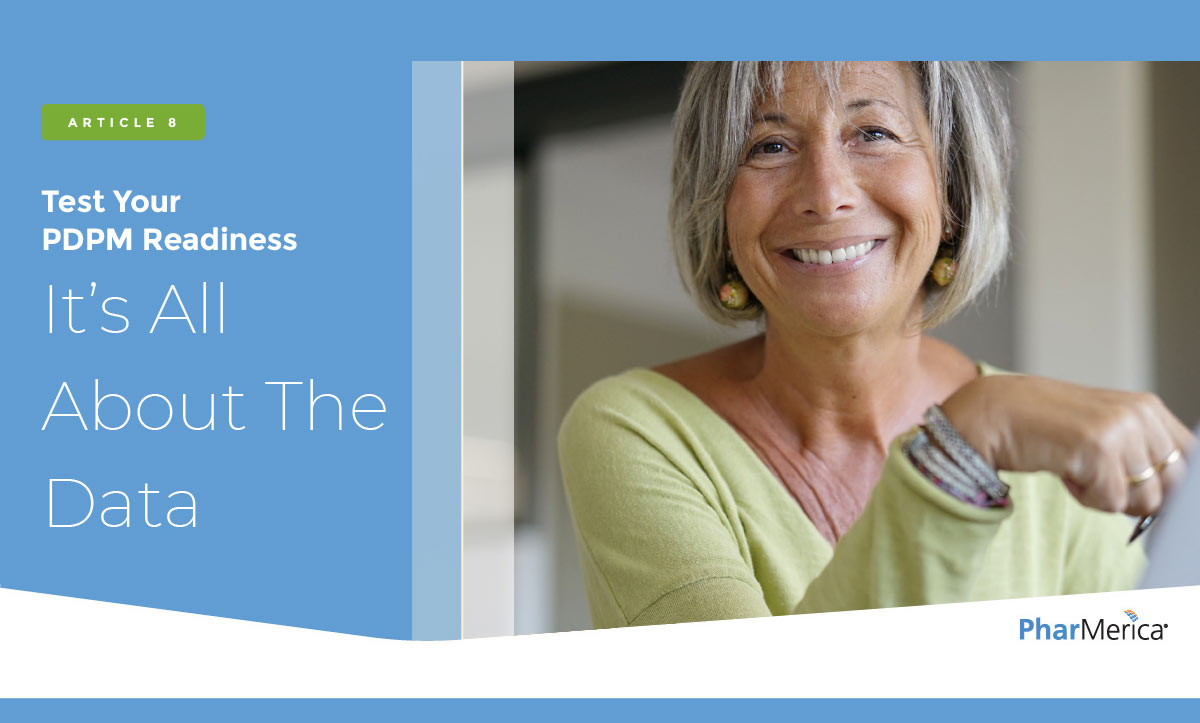
PDPM: Article 8 Test Your PDPM Readiness – It’s All About The Data
November 10, 2020Get ready for the October implementation date of the Patient Driven Payment Model (PDPM) with our informative series of articles authored by Leah Klusch, RN, BSN, FACHCA, founder and director of The Alliance Training Center. We’ll prepare you for the new reimbursement model with detailed insights in a step-by-step guide to PDPM success. You’ll learn about everything from building staff competencies and improving your coding practices to the value of partners and how to enhance efficiencies. The series will conclude with a checklist to help you gauge your readiness.
By this point, everyone on your team knows about the Patient Driven Payment Model (PDPM). But are they armed with a compliant and accurate data collection process, ready for the transition? Converting to the new payment model will have a broad-based impact, so ensuring your clinical, operations and administrative teams are properly trained is essential to PDPM success. Here are three mission-critical areas.
1. STAFFING: Complying with the conversion to the PDPM requires having adequate staff and effective methods for them to communicate about all the different data collection items that will impact PDPM payment. That’s because the new system will shift from requiring less than 20 items that affect payment under RUG-IV model today to well over 200 with the PDPM.
2. PROCESS: Cross-functional management must understand how data is collected NOW before the transition to the PDPM so they can understand what decisions they need to make to collect all the additional data required – and in a very compressed timeframe. That means asking questions like:
- Who is involved with data collection presently?
- What is the data collection process?
- If there are issues currently, have we identified them and how to solve them?
3. DATA QUALITY AND ACCURACY: Facilities should look at the quality and accuracy of the data they’re sending in under PPS. The main focus should be reproducibility: everything in the MDS has to be documented in the medical record, which will be a big task with PDPM’s larger database. All MDS data needs to be formulated according to the directions in the RAI manual.
For example, if you want to audit the accuracy of your data today, you just have to look at the therapy department records and ADL scores in the nursing records and make sure they match what’s in the MDS. After the PDPM conversion, there will be five different areas of data collection PT, OT, SLP, Nursing, and NTA – and each area will require you to go back into the record and audit the data on the MDS. For instance, for PT and OT, you’ll need to audit the primary diagnosis entered at admission and functional performance scores off of Section GG.
Key Takeaway
Entering and tracking data under PDPM will be a huge task and will impact reimbursement after October 1. Everyone on your team needs to understand the changes required and be trained on how the facility will manage the tasks for a seamless transition.
Quick Links


Leah Klusch, RN, BSN, FACHCA,
founder and director of The
Alliance Training Center
